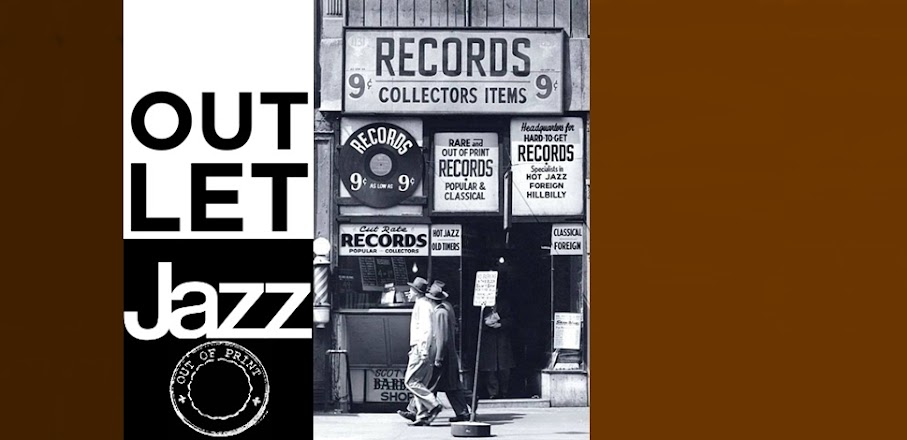With this album, guitarist Barry Galbraith, an important but relatively unheralded presence on many jazz recordings on this coast, steps out of his usual role of the supporting, contributing player, and becomes the principal speaker. Equipped to be just that, Galbraith, naturally and with definable grace, makes his instrument sing and swing, issue forth a full yet engagingly personal voice.
Playing an instrument that has a wealth of tradition both in and out of the jazz area, Galbraith shows an awareness of this in his playing, verbally underlining his position during our conversations concerning this album.
Galbraith, as a person, is. unintrusive yet decisive; unassuming yet authoritative; and like many jazz musicians, his instrument has proven more than an adjunct to his personality, but THE friendly medium through which the flow of his thoughts find most compatible expression.
As some of his colleagues have noted, Galbraith has a "natural" flare that lends the impression of the "easy and everyday" to the musically valuable or difficult. Whether playing at a social gathering, on a job or recording date, he is "inside his horn", fully concentrated, oblivious to extraneous bother.
Self taught, Barry has proceeded through the hallowed halls of the school of experience, remembering and assembling, pointing up, underlining the important along the way.
This album is shaped to delineate a variety of moods in addition to the softer, romantic feeling that has, by constant association, assumed priority in definition of the word, mood.
*Burt Korall (liner notes)*
Barry Galbraith was one of New York's busiest session jazz guitarists in the 1950s and '60s. Between 1941 and the late 1970s, he was on 620 recording dates, a staggering total. How many albums did he record as a leader under his name? Just one — Guitar and the Wind, for Decca. What a shame that Decca didn't record a few more like this one. Recorded in January 1958 over three days, the album is beautifully arranged, swings tastefully and is a gorgeous example of what made Galbraith special. His chord voicings were seductive and his improvised runs were tasty and unbeatable.
*Marc Myers*
A nicely varied set spotlighting the artist in several approaches — all of them effective. When Galbraith has the melody or is improvising, he shows a fresh, inventive style. In backing other instruments, harmonically or percussively, he also shines. His admirers will find this one of his best efforts. His style can be traced to Charlie Christian and Gerge Van Eps. Small combo and larger group selections are done with equal good taste.
*Billboard, April 21, 1958 [Special Merit Jazz Album]*
1 - Bull Market
(Billy Byers)
2 - A Portrait Of Jennie
(Gordon Burdge, J. Russel, Robinson)
3 - Judy's Jaunt
(Al Gilbert)
4 - Nina Never Knew
(Milton Drake, Louis Alter)
5 - Walking (Down)
(Carpenter)
6 - A Gal In Calico
(Robin, Schwartz)
7 - I Like To Recognize The Tune
(Richard Rodgers, Lorenz Hart)
8 - Any Place I Hang My Hat
(Johnny Mercer, Harold Arlen)
9 - Love Is For The Very Young
(David Raksin)
10 - Holiday
(Al Gilbert)
11 - Ya' Gotta Have Rhythm
(Osie Johnson)
12 - What Am I Here For?
(Duke Ellington)
Barry Galbraith (guiar), with:
#1,#4, #8, #12
Urbie Green, Chauncey Welsch, Frank Rehak (trombones); Dick Hixson (bass trombone); Bobby Jaspar (flute, tenor sax); Eddie Costa (piano, vibes); Milt Hinton (bass); Osie Johnson (drums).
Recorded in New York City, January 16, 1958.
#2, #6, #7, #10
Bobby Jaspar (flute, tenor sax), Phil Bodner (flute, clarinet, bass clarinet), Romeo Penque (clarinet, flute, English horn), Spencer Sinatra (clarinet, flute); Eddie Costa (piano, vibes), Milt Hinton (bass); Osie Johnson (drums).
Recorded in New York City, January 21, 1958.
#3, #5, #9, #11
Bobby Jaspar (flute), Eddie Costa (piano), Milt Hinton (bass), Osie Johnson (drums).
Recorded in New York City, January 28, 1958.


https://1fichier.com/?q2izp3w443l0r79z3ce3
ReplyDeleteThank you!
ReplyDeleteMuchas gracias!
ReplyDeleteThanks again!
ReplyDeleteMuchas gracias.Saludos
ReplyDelete